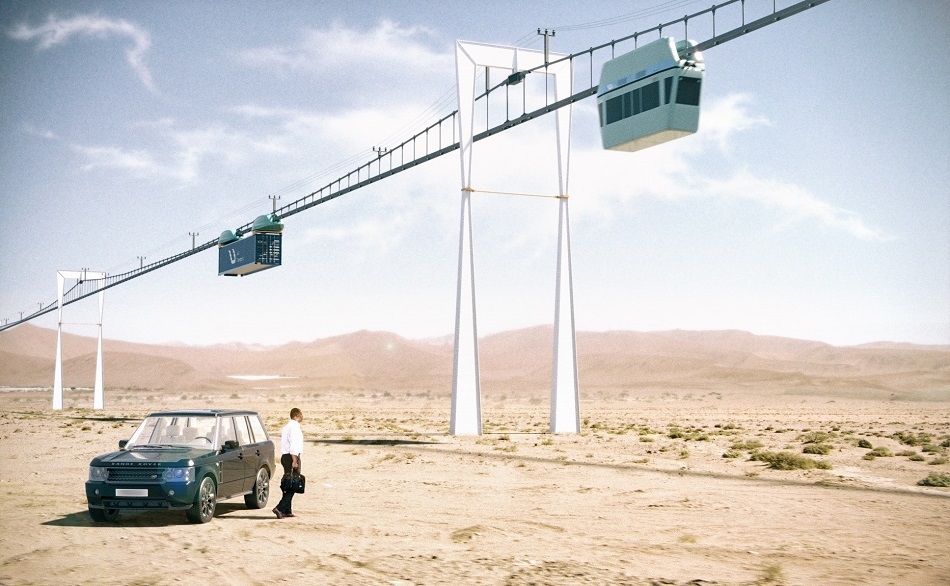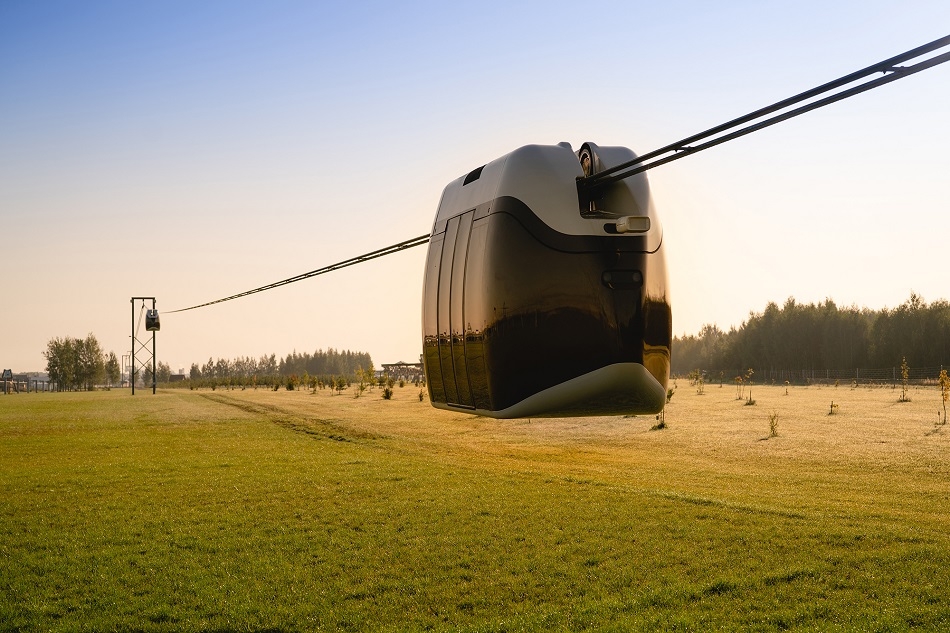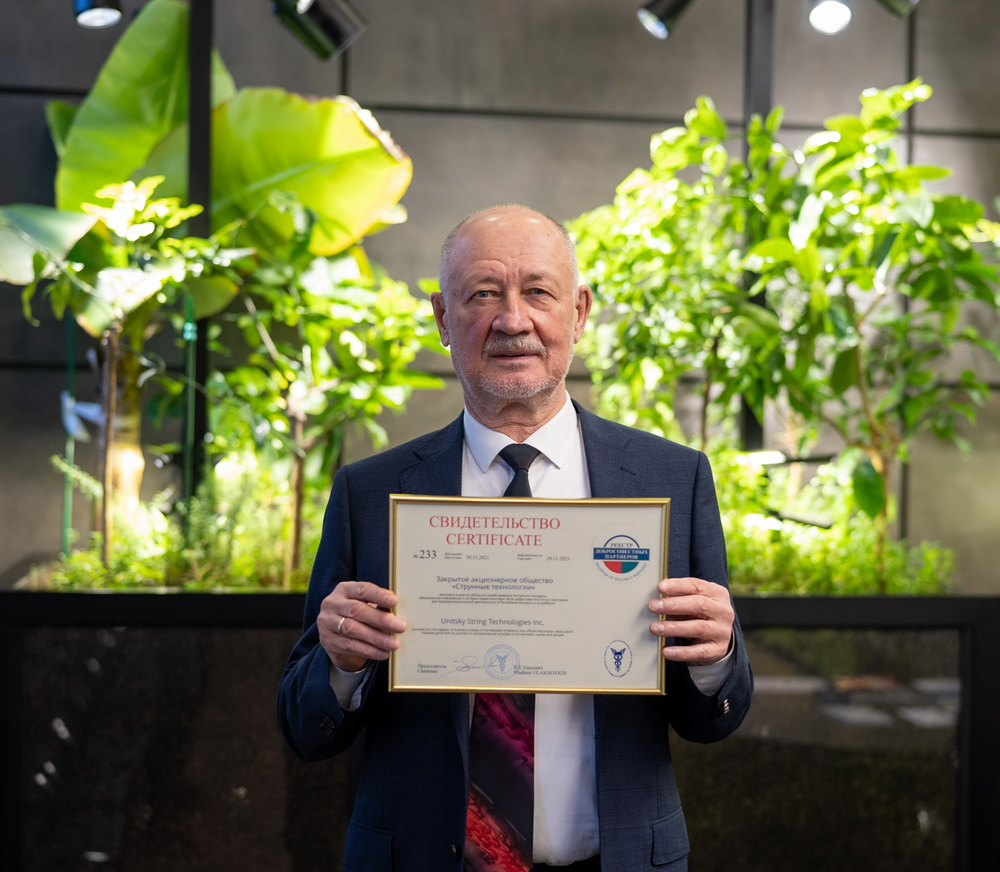Swivel Support of uST String Rail Complexes: Technology, Mechanics, and Capabilities

The development of string rail transport, proposed by Unitsky String Technologies Inc., is accompanied by the implementation of unique engineering solutions. One of the key elements of the track structure is the swivel support. These components provide route flexibility, allowing paths to be laid across complex terrain and adapted to urban landscapes. Let’s explore the operating principles of swivel supports, their structural features, and technical limitations.
Why Swivel Supports Are Needed
Unlike traditional railways or highways, string rail routes are designed to follow the straightest possible trajectory. This approach helps save materials, reduce track length, and increase transport speed. However, it’s impossible to eliminate curvature entirely—routes must bypass buildings, water bodies, utility infrastructure, or terrain features. Swivel supports are used to solve this challenge by defining the angle of curvature for the string rail.
Design and Operating Principle
A swivel support is a massive structure capable of withstanding horizontal loads that arise when the route changes direction. It differs from supporting towers by having a reinforced design, a larger base, and a specialized mounting system for the string rail track.
Key components of a swivel support include:
- Anchor nodes – secure the string rail and redistribute tension forces.
- Supporting structures – bear the vertical load from the rolling stock.
- Guiding elements – ensure smooth bending of the string rail track and prevent over-flexing.
When designing the entire route, it’s taken into account that the load from the turn is absorbed by several components: the bundle of rods inside the beam, the supporting saddle, and the foundation. This integrated approach ensures high rigidity and long-term durability of the structure.
Swivel Mechanics
At the core of the swivel support’s function lies the ability of the string rail beam to bend within the horizontal plane. Inside the beam is a bundle of pre-stressed rods that absorb the primary force. When the route trajectory changes, the string rail is fixed in the required position, and the bending moment is redistributed between anchoring structures and supporting towers.
uPods (the rolling stock of the uST complex) use a system of steerable wheelsets when navigating turns, which ensures rail adhesion and stable movement. Additional safety elements prevent derailment even under lateral overloads. Thus, the swivel support performs two key functions:
- It defines the required angle of route deviation.
- It maintains track smoothness, minimizing vibrations and passenger load.
Maximum Turning Angle
The maximum turning angle depends on the type of route, travel speed, and the purpose of the complex.
- For urban uST routes with cruising speeds up to 150 km/h, turns with a radius of about 100–200 meters are allowed, corresponding to angles of up to 10–15° per support.
- For low-speed lines (e.g., intra-city transport routes), swivel supports can accommodate angles up to 30°, provided there are more supports and lower loads.
- For high-speed routes (speeds over 300–500 km/h), turns are executed with minimal angles—typically no more than 2–3° per section—to ensure smooth motion and safety.
This means the route can be designed with any necessary bends (both vertical and horizontal), but their radius and frequency will depend on the calculated speed and throughput of the complex.
The minimum curve radius is 10 meters—typically found near stations, terminals, or garages combined with maintenance facilities, where the speed of rail-based electric vehicles is close to zero. On curved sections with a radius under 100 meters, the rail is constructed without strings (similar to conventional railway rails) and supported by beam or truss span structures of either standard or string type. Anchoring structures may be combined with swivel supports at stations or shared between two track structures at a turn.
Engineering Advantages
The use of swivel supports in uST transport infrastructure complexes offers a range of engineering benefits. For example, route flexibility allows for bypassing buildings, natural obstacles, and utility structures, eliminating the need for tunnel excavation and large-scale earthworks. String rail tracks can also be laid in densely built environments while preserving the architectural character of existing infrastructure. Moreover, the smooth trajectories of string rail track structures ensure stable movement of uPods, creating safe and comfortable conditions for passengers.
Future of the Technology
Today, specialists at UST Inc. are actively refining swivel support technology. Durable composite materials, new methods for tensioning and securing string rails, and intelligent monitoring systems that track loads and predict wear are being implemented. All of this enhances the longevity of the track and improves its adaptability to urban environments.
In the future, swivel supports will become one of the key components of smart cities and innovative transportation systems, where routes are designed based on dynamic passenger flow models and seamlessly integrated into complex infrastructure.
Practical Application
Swivel supports in uST string rail complexes are a vital structural element that provides the necessary flexibility and functionality for the track. Thanks to these supports, string transport can be smoothly embedded into urban landscapes, navigate challenging terrain, and remain safe, fast, and economically efficient. The maximum turning angle depends on the line class and travel speed: from 10–15° on urban routes to minimal angles in high-speed projects.
Thus, the swivel support transforms the linear concept of the string rail into a versatile solution for modern above-ground transport, unlocking new possibilities for its use in megacities and interregional projects.
More news

Blog
5 September 2025
Methods of Protecting the uST Complex from Natural Disasters
Let's explore how uST transport and infrastructure complexes are protected from extreme weather conditions.

Blog
9 October 2023
Unload the Far Eastern ports: what uST complexes are capable of
How the implementation of uST complexes will help to cope with the increasing load on the port infrastructure on the Far East.

News
18 January 2022
Unitsky String Technologies Inc. Is Included in the Register of Bona Fide Companies of Belarus
Unitsky String Technologies Inc. is a reliable and conscientious partner for business activities both in Belarus and abroad. Another confirmation of this is the inclusion of the company in the relevant register of business entities by the Belarusian Chamber of Commerce and Industry.

